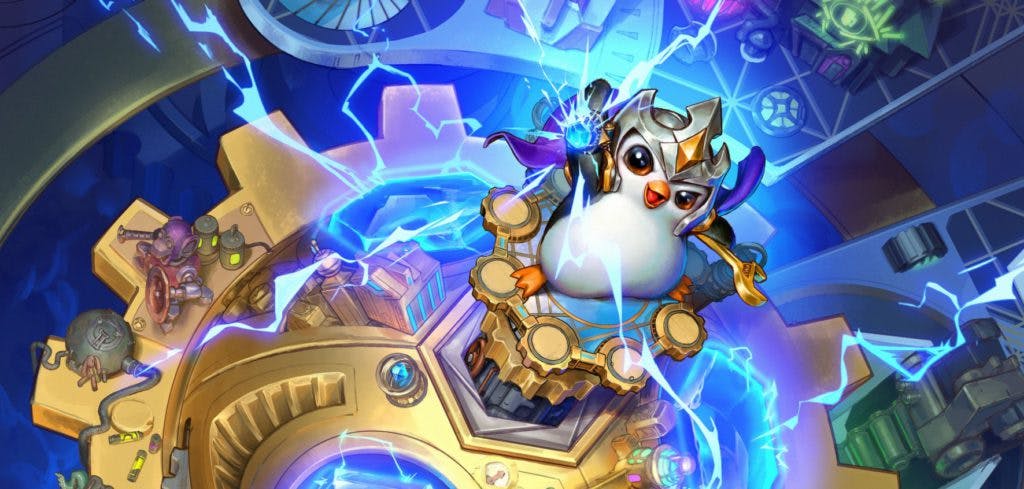Learn more about TFT’s rank distribution so you can motivate yourself to climb or brag to all your friends!
Each game mode in TFT is similar, sharing champions, traits and items, but having differences in other areas, including how they're played and even their rank distribution. It's easy to know that hitting that next rank is ideal. However, it's not always clear what your skill level is compared to the rest of the playing field.
This is especially true when considering that modes like Hyper Roll and Double Up variate from the standard League of Legends ranking system that many are familiar with.
With TFT experiencing a surge in popularity in Set 6, players around the world are fighting to climb the ladder. While some are spamming the best comps, some are simply learning the game as they climb.
Regardless of where you're at in terms of skill, it's fun to know what your rank means. And how much of the player base you're better than! Without further ado, let's break down TFT rank distribution throughout each of TFT's game modes.

Standard Ranked TFT
Like League of Legends, standard ranked TFT follows the Iron through Challenger ladder. So if you're familiar with that system, you'll be able to make easy sense of this one.
Also similar to LoL, the number of players in Masters, Grandmasters and Challenger is extremely few. On the other hand, Bronze, Silver and Gold encompass the vast majority of players.
With that said, here's the breakdown of what percentage of players are in each tier, courtesy of LoLCHESS.GG:
- Challenger: 0.02%
- Grandmaster: 0.04%
- Master: 0.94%
- Diamond: 4.25%
- Platinum: 13%
- Gold: 27.54%
- Silver: 33.89%
- Bronze: 17.07%
- Iron: 3.25%
Funnily enough, Iron rank is more exclusive than Diamond rank, which is typically a big benchmark to hit. But if you're in Iron or Bronze, you might want to still rank up a tad. As you can see, it's easily doable for most players to hit Silver, so you can do it too!
Overall, even hitting Gold puts you in the top 50% of players. Past that, every rank-up is a significant improvement and something to take pride in. So take that info and put it to use, either to brag to friends or as motivation to reach your goals!
Related articles
Hyper Roll
Next up in TFT is Hyper Roll, whose rank system and distribution are quite different. Instead of using LP, it uses MMR directly to place players into one of only five tiers. Because there are just five tiers, there is a lot less variation generally.
For those who don't know, Hyper Roll is a faster-paced mode whose games only take around 15 minutes. In it, you can't buy XP or earn extra gold through saving gold. Because of that, you simply roll and fight, though there are some nuances that make it challenging in its own way.
Seeing as games finish quicker, every decision is that much more important, and it means that you have the potential to climb, or fall, in rank much faster too.

At any rate, here are the current Hyper Roll tiers and MMR benchmarks with their respective player base distributions according to LoLCHESS.GG:
- Hyper (4200): 5.06%
- Purple (3400): 9.22%
- Blue (2500): 16.92%
- Green (1500): 47.51%
- Grey (0): 21.28%
As you can see, the overwhelming majority of the player base resides in the bottom two tiers, with nearly half being in Green tier specifically. For those who want to equate this to the standard ranked TFT distribution, Grey-Blue tiers are roughly equivalent to Iron-Gold.
After that, Purple is comparable to Platinum, though has a slightly smaller population. Finally, Hyper Tier can be related to Diamond+, which means you're among the best of the best if you manage to reach it. But considering that the minimum benchmark for Hyper is at 4200, and the current highest-ranked player is at over 10,000 points, there is certainly a wide spectrum of skill in this tier itself.
Double Up coming soon
Sadly, TFT's newest mode, Double Up, doesn't have rank distribution stats we can see yet. This latest game mode lets you play with a friend, with whom you share an HP pool and can trade champions and items. Other than that, it's like standard TFT in the fact that it has longer games and you can buy EXP as well as build up economy.
It isn't the fast-paced Hyper Roll but does share the same ranking system interestingly enough. As a result, it's pretty likely that the player distribution will be very similar to Hyper Roll's distribution. It's not clear when the stats will be released but we'll make sure to update this section when they are!
Finally, it's important to note that these distributions reflect Set 6 and may change throughout the set and in future sets. They'll probably stay mostly the same, but keep in mind the percentages will change at least a little bit over time.